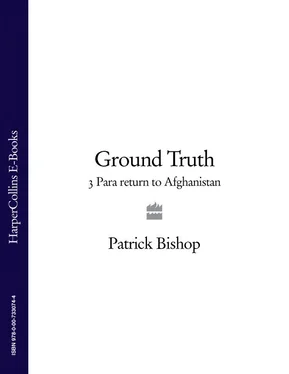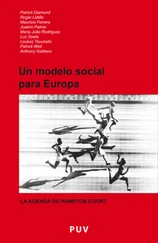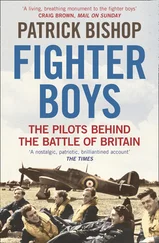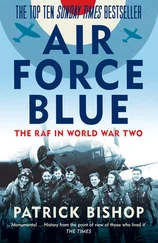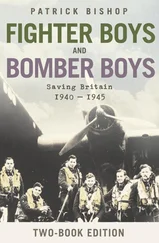Then, rested and invigorated, their armouries and ranks replenished, they were ready to begin another summer of fighting. The Taliban were slow learners. It had taken them two fighting seasons to refine their tactics. They had started out in the summer of 2006 trying to drive out the British by weight of numbers, throwing themselves against the bases at Sangin, Now Zad and Musa Qaleh in frontal attacks that lost them many men but failed to dislodge the defenders. They seemed able to suffer remarkably high casualties without losing their will to keep fighting.
The weight of the losses that they suffered in 2006, though, was unsupportable. Gradually the Taliban developed new approaches which reduced their own casualties while increasing the damage they could inflict on their enemies. By the start of Herrick 8 both sides were engaged in what looked like a classic ‘asymmetric’ conflict.
Wars with insurgents were always unbalanced. One side had modern conventional weapons. The other fought with what was cheap, portable and easily improvised. But in Afghanistan the scale of asymmetry at times seemed blackly absurd. Supported by the Americans, the British had an ever more sophisticated armoury of jets and helicopters, missiles and artillery, operated by men but controlled by computers. The Taliban’s basic weapon was an AK-47 rifle of Second World War design, augmented by machine guns, RPGs and latterly home-made roadside bombs. The Allies’ satellites and spy planes and unmanned drones roamed the skies like hawks, sensitive to the slightest scurrying creature on the ground. The insurgents relied on their own eyes or those of their spies, the teenaged ‘dickers’ who appeared on rooftops or loitered at roadsides as soon as the soldiers arrived. The NATO soldiers were encased like armadillos in body armour and stomped across the fields and ditches in boots, laden with half their own body weight in kit. The Taliban wore cotton shifts and sandals.
But the Allies’ lavish assets were failing to alter the direction of the war. The Taliban showed no sign of losing heart. The level of attacks had been mounting steadily since 2006 and their methods were growing more skilful and effective. The main change on the battlefield when the Paras arrived in 2008 was the use of improvised explosive devices (IEDs), home-made bombs, packed with powder from old shells or chemical fertiliser and set off by simple electric triggers. They also had to deal with the increased threat from suicide bombers. Anti-American rebels had made great use of IEDs and suicide bombs in Iraq but they had been late arriving in Afghanistan. Together, they now kept the troops in a constant state of alertness and anxiety. The insurgents’ new methods carried less risk to themselves than did their previous confrontational tactics. Even when they suffered losses, though, there seemed to be no shortage of replacements.
Since the first deployment there had been a progressive lowering of expectations about what the British could achieve on the military front in Helmand. One of the articles of faith of the counter-insurgency catechism was that you could not defeat an uprising by military means alone. Twentieth-century armies had shown themselves to be remarkably inefficient when it came to dealing with insurgencies. Guerrilla forces had defeated the French in Algeria, the Americans in Vietnam and, most recently, the Russians in Afghanistan.
Victories, when they were achieved, took a long time, far longer than victories in conventional wars. In the British experience, the struggle to defeat the communist rebels in Malaya lasted from 1948 to 1960. The campaign against the Mau Mau rebels who rose against British rule in Kenya in 1952 took eight years to suppress. The British Army’s active involvement in Northern Ireland stretched for thirty-eight years. As became clear in the spring of 2009, the embers of rebellion still glowed.
Nonetheless, the high casualties that the Allies were inflicting on the Taliban encouraged initial hopes that, in a relatively short time, the insurgents might be worn down to the point where they were ready to give up or start negotiating. Brigadier Ed Butler, the senior British officer in Helmand during the Paras’ 2006 tour, declared as they left for home in mid-October that ‘the Taliban [are] on the back foot and we are in the ascendancy’. He claimed the insurgents were ‘having trouble with their resupply lines, getting resources and ammunition through’ and that ‘the morale of the foot soldier has lowered’. He was speaking after the fighting in Musa Qaleh had been halted by a deal brokered by the tribal elders of the town. They promised to raise a local militia to police the area if the Taliban and British withdrew. The ceasefire that followed lasted until early February 2007, when the Taliban took over the town following the killing of one of their leaders in an American airstrike. They murdered the elder who inspired the plan and terrorised the inhabitants. It was not until December that the Alliance retook the town.
The Alliance commanders tended to be cautious in their military assessments, avoiding talk of ‘winning’ and ‘victory’. Instead they emphasised the holistic nature of the operation. The fighting was unfortunate. But it was necessary to establish the climate of security that would allow southern Afghanistan to be healed, physically and morally.
Throughout the summer of 2007, 12 Mechanised Brigade maintained pressure on the Taliban, mounting vigorous sweeps through the Sangin Valley and driving them out of Sangin town. Whenever they encountered the insurgents they defeated them. But, as their commander, Brigadier John Lorimer, acknowledged, this, on its own, achieved little. ‘When we close with the Taliban we beat them,’ he said. ‘But the critical part is what happens after that…we need to make sure that we can clear the Taliban from those areas so that the government can extend its influence and authority to help the local people.’
His successor, Brigadier Andrew Mackay, who led 52 Infantry Brigade into Helmand in October 2007, shared Lorimer’s analysis. He said as he took over, ‘we are concentrating our efforts towards a balance between offensive operations we know are required to counter the Taliban…against those operations we know will make a difference in the medium to long term, such as the reconstruction and development, bringing on the Afghan National Army and the Afghan National Police’. He concluded: ‘What I’d like to be able to do is a lot more of the latter than the former.’
But that was not how things worked out. Measured by the volume of shooting, the level of violence in Helmand showed a steady upward curve in the eighteen months after the British arrived in 2006. In the course of the ‘break in battle’, the 3 Para Battlegroup fired 470,000 rifle and machine-gun bullets. In Herrick 5, a roulement that covered the supposedly quiet winter months, the number more than doubled to 1.225 million. In Herrick 6 it doubled again to 2.485 million. In Herrick 7, despite Brigadier Mackay’s intentions, it dipped only slightly to 2.209 million. These figures are only for bullets fired by rifles and medium and heavy machine guns on the ground. They do not include tens of thousands of 105mm and 88mm rounds fired by the artillery and mortars, and the thousands of cannon shells, rockets and bombs showered down by the British and NATO helicopters and jets.
There was little to show for all the spent ammunition. Following the ousting of the Taliban from Musa Qaleh and Sangin, some but not all refugees from the fighting returned home. The bazaars stirred back into life and farmers resumed their weekly trek to the markets to sell their crops, sheep and goats. This was progress, but only if the situation was being compared with the dark days of the summer of 2006. No one would claim that the civilians’ existence was better now than it had been before the British arrived.
Читать дальше
